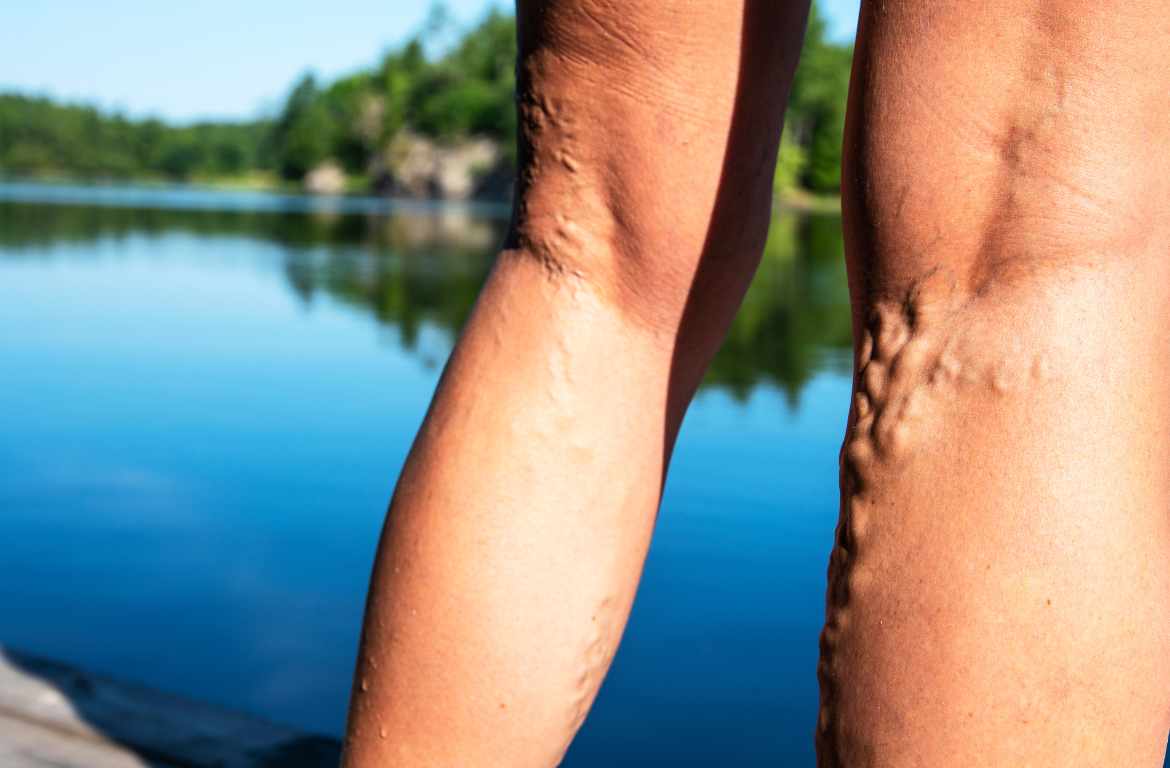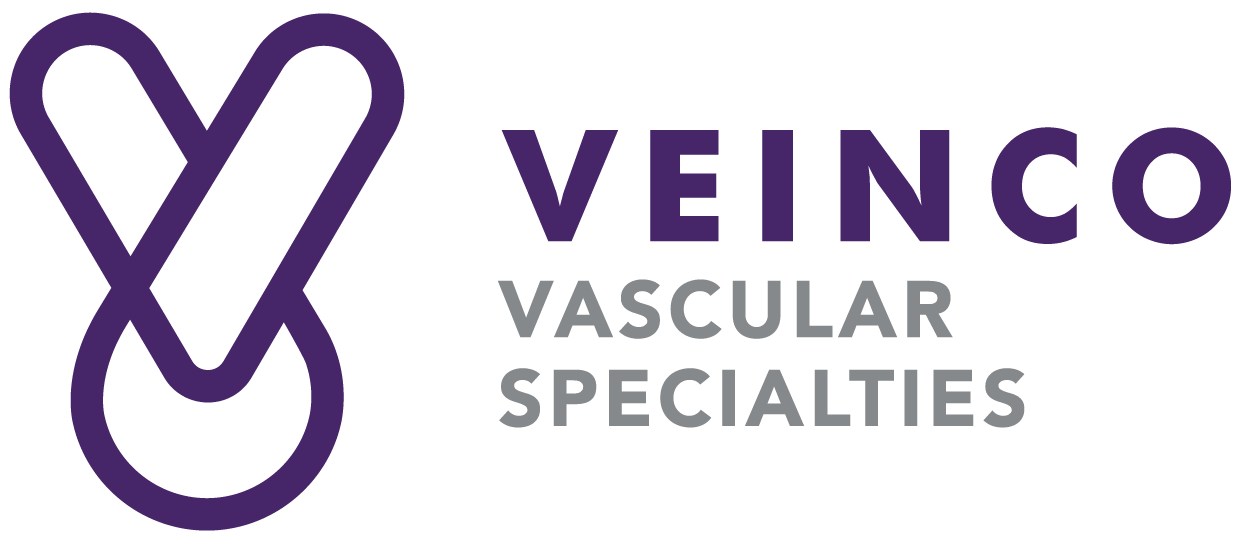
Has your doctor said recently that you are at risk or have developed deep vein thrombosis (DVT)? Are you worried about the stages of varicose veins in your legs? Rest assured, you are not alone.
Thrombosis is a phenomenon that an increasing number of the population suffers. It is produced by the obstruction of the blood caused by a clot. Therefore, it is vital to know its symptoms, causes, and how to reduce the risk of developing this life-threatening condition.
Since October 13 is world thrombosis day, we want to take this time to debunk myths about deep vein thrombosis and provide you with reliable information backed by scientific evidence. Thus, you can be protected from misinformation that may create doubts, and fears or, worse, minimize this condition. Please continue reading to learn these facts and how you can prevent varicose veins and their symptoms.
Venous diseases that can cause deep vein thrombosis
As we mentioned at the outset, thrombosis occurs when blood clots form in a vein or artery, which prevents proper blood circulation. If this clot occurs in the lower veins, it can cause deep vein thrombosis.
On the other hand, if the thrombosis lodges in the lung, it can cause what is known as a pulmonary embolism, and if the clot makes its way to the arteries of the brain, it can cause a stroke. On the other hand, if the interruption of blood circulation occurs in the heart’s arteries, then we are already talking about a myocardial infarction.
How to prevent DVT
There are some steps you can take to reduce the risk of chronic venous insufficiency, including:
- Reduce the consumption of salt and sodium
- Wear compression stockings and loose socks or a compression device on the lower extremities.
- Avoid a sedentary life; walk and move your legs more often
- Keep a healthy weight by eating healthy, as obesity can increase pressure on the legs and veins
- Consult your doctor immediately in case of symptoms such as pain, discomfort, and numbness, which can also be caused by cardiac arrhythmias and coagulation problems
- Take breaks to walk if you have extended periods sitting down during your everyday work or will take long trips
- If you recently had surgery, you should get back on the move as soon as possible. This will reduce the chance of blood clots
- If there is a history of deep vein thrombosis symptoms (DVT) in your family, let your doctor know to protect yourself
- If the vein specialist gives you treatment options such as anticoagulants to reduce the risk of thrombosis, respect the indications regarding their use.
9 Myths and Facts:
- If you are young, play sports, and avoid junk food, you should not worry about a thrombosis: FALSE. Although blood clots occur more frequently in people over 60, you should know that thrombosis usually appears in any age range, especially in patients over 25 with a family history of deep vein thrombosis symptoms.
- Birth control pills and smoking cause thrombosis: FACT. Contraceptive hormones have often contributed to the formation of blood clots and enlarged veins. In turn, tobacco contains substances that interfere with the coagulation and circulation of blood flow, which increases the risk of venous thrombosis. Thus, avoiding smoking is better to prevent blood clots and vein damage.
- There are more women who suffer from DVT: FALSE. There is no difference between men and women since men can suffer from venous thrombosis. Although most studies show that there are more varicose veins in women in different degrees of severity, studies have described a higher prevalence of varicose veins in men than in women.
- Pregnancy can cause thrombosis: FACT. Among the main reasons for this fact are the increase in hormonal levels and the venous compression of the uterus, which predisposes to the formation of blood clots during or after pregnancy. The risk of suffering from venous thrombosis increases from 5 to 10%. Two-thirds of this condition occurs in the prenatal period. Fortunately, you can prevent these types of problems by following medical advice.
- If I suffer a thrombosis, there is no way to avoid it: FALSE. Anticoagulant medications and blood thinners indeed reduce the risk of thrombosis. However, the key to minimizing it is to avoid periods of prolonged immobility. For example, it is necessary to walk and exercise continually and elevate the legs periodically.All these practices are essential to prevent blood clots, blood accumulation, varicose, and spider veins. And what is better, you can reduce the possibility of developing deep vein thrombosis.
- Varicose veins increase the risk of thrombosis: FACT. Varicose veins are abnormal superficial veins that reduce healthy blood flow, increasing the risk of clot formation, but not all people with varicose veins develop thrombosis. If you have doubts, talk to Veinco’s vein specialists to receive the best varicose vein treatments and treat DVT.
- If you feel a lot of pain in your legs or thighs, it is a venous thrombosis: FALSE. Generally, the most common symptoms of venous diseases, such as thrombosis, are swelling, increased skin temperature, and pain in the affected area. Often, these symptoms can be confused with muscle pain or injury.In these cases, if you have serious doubts, it is crucial to conduct a professional consultation, such as undergoing a test with an Echo-Doppler, which allows the specialist to visualize the blood vessels quickly, safely, and efficiently. In fact, at Veinco, we can help you identify any venous disease and immediately provide you with treatment options for varicose veins and deep vein thrombosis.
- Air travel causes thrombosis: FALSE. Although the belief has spread that air travel is a risk factor for developing thrombosis, evidence shows that the risk of death from pulmonary embolism is less than 0.6 per million passengers flying for more than three hours.
- Thrombosis is only an aesthetic problem: FALSE. Some people report that varicose veins are just a cosmetic problem. However, in most cases, it is usually more than that because this problem can develop symptoms that include pain, muscle cramps, heaviness, and swelling in the legs, a condition that a vein expert should only treat.
Enjoy permanent relief from deep vein thrombosis symptoms!
After reading this blog, if you conclude that you have any symptoms of varicose veins or you think you may be prone to the formation of blood clots and deep vein thrombosis, don’t waste any more valuable time and go to Veinco, a world-class vascular specialty center in Monterrey, Mexico.
On October 13 we celebrated the World Thrombosis Day. It’s a great opportunity to learn about real-life stories from other people who are going through similar circumstances in life.
Contact our Veinco specialists to enjoy world-class, minimally invasive treatments at lower costs without cutting corners on your medical care. You can be sure that you will have the appropriate treatment in the presence or risk of venous thrombosis. So, do not put off this crucial decision; contact us toll-free at (888) 568-3409 or email us at: hello@veinco.com.mx
